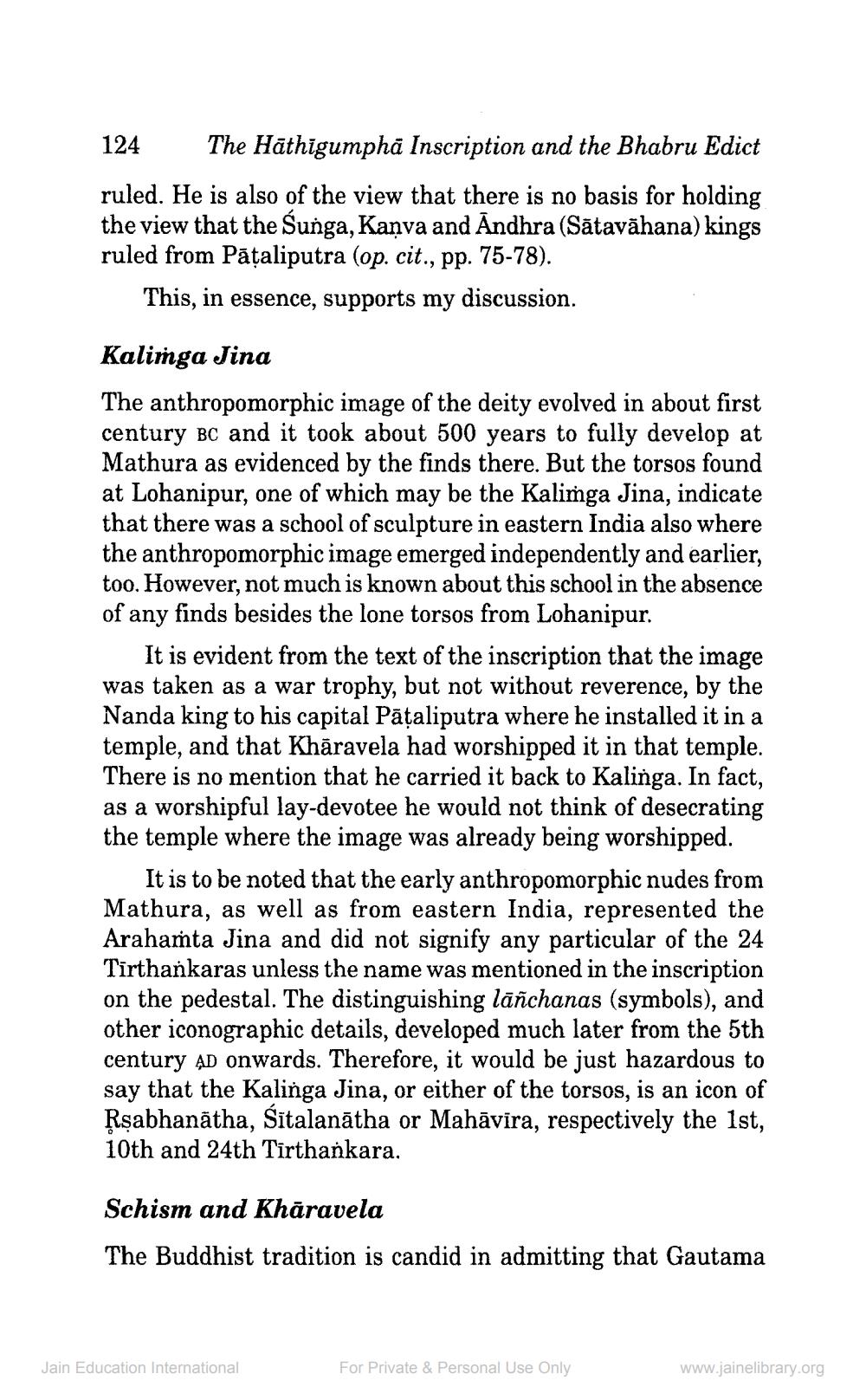________________
124
The Hāthīgumphā Inscription and the Bhabru Edict
ruled. He is also of the view that there is no basis for holding the view that the Sunga, Kanva and Andhra (Sātavāhana) kings ruled from Paṭaliputra (op. cit.,
pp. 75-78). This, in essence, supports my discussion.
Kalimga Jina
The anthropomorphic image of the deity evolved in about first century BC and it took about 500 years to fully develop at Mathura as evidenced by the finds there. But the torsos found at Lohanipur, one of which may be the Kalimga Jina, indicate that there was a school of sculpture in eastern India also where the anthropomorphic image emerged independently and earlier, too. However, not much is known about this school in the absence of any finds besides the lone torsos from Lohanipur.
It is evident from the text of the inscription that the image was taken as a war trophy, but not without reverence, by the Nanda king to his capital Paṭaliputra where he installed it in a temple, and that Khāravela had worshipped it in that temple. There is no mention that he carried it back to Kalinga. In fact, as a worshipful lay-devotee he would not think of desecrating the temple where the image was already being worshipped.
It is to be noted that the early anthropomorphic nudes from Mathura, as well as from eastern India, represented the Arahamta Jina and did not signify any particular of the 24 Tirthankaras unless the name was mentioned in the inscription on the pedestal. The distinguishing lañchanas (symbols), and other iconographic details, developed much later from the 5th century AD onwards. Therefore, it would be just hazardous to say that the Kalinga Jina, or either of the torsos, is an icon of Rṣabhanātha, Šītalanātha or Mahāvīra, respectively the 1st, 10th and 24th Tirthankara.
Schism and Khāravela
The Buddhist tradition is candid in admitting that Gautama
Jain Education International
For Private & Personal Use Only
www.jainelibrary.org




